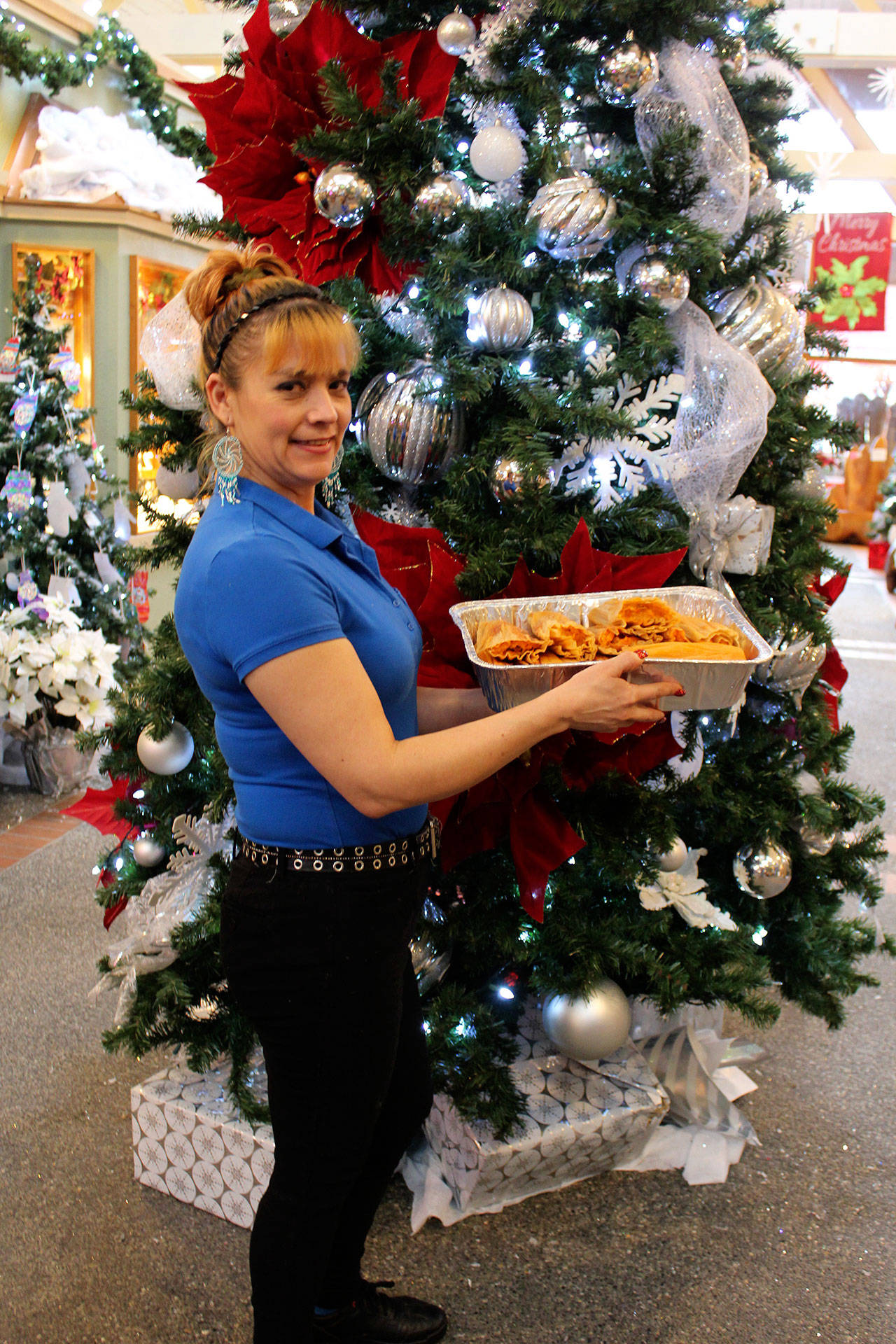Christmas time is tamale time for Silvia Acuna.
She creates the tasty and time-consuming bundles of corn and meat for her family and for customers at Noe Jose Cafe in Oak Harbor’s Harborside Village Mall.
“My mother made them the same day to have at dinner for Christmas,” said Acuna, raised in the Mexican state of Michoacan. “Sometimes, for birthdays, she also made tamales.”
The thick corn-based tasty packages of meats, cheeses or vegetables are wrapped up in a corn husk and steamed.
Often the bundle is tied with a string made from the husk.
Call it a Christmas treat for your taste buds.
“You have to unwrap it to eat it,” said Jose Ochoa, “so it’s like a present.”
Jose and Noe Ochoa, Acuna’s sons, opened their restaurant this spring.
Reasons why tamales came to be the taste of the holiday season vary. Some say it’s part of the Mexican celebration of Las Posadas, which commemorates Mary and Joseph’s search for shelter before the birth of Jesus.
Others simply say familia — family.
“It’s a tradition at Christmas because families get together, the moms, the sisters, the daughters and we invite the neighbors,” said Yolanda Rodarte, a server at Noe Jose Cafe. “It’s not a lot of work when there’s a lot of people, then it’s fast.”
Natasha Rodriguez, co-owner of El Cazador restaurant in Oak Harbor, said she and her husband, Jose Rodriguez, decided years ago to offer bulk orders of tamales during the Christmas season.
“We wanted to share the tradition of our families with our customers,” she said. “This season alone, we’ve already sold thousands.”
El Cazador tamales are created by “the uncles,” Pepe and Alonso Rodriguez, the restaurant’s chefs.
Sold by the dozen freshly steamed or frozen, customers can choose between pork, beef, chicken and cheese and chile, or get an assortment.
This time of year, family kitchens fill with small assembly lines of “tameleros,” each person tending to a specific task: soaking the corn husks, preparing the filling, plopping down the filling, rolling and steaming.
Getting the corn filling just right is key to a tamale’s texture. It’s tricky, explained Natasha Rodriguez.
“The corn masa, which is the dough, must be fluffy but not too thick, not too dry,” she said.
The dough is made from a base of large-kernel corn that has been dried and usually cooked in a mixture of water, lard, butter, baking powder, salt and chicken broth. It’s drained, dried and ground into a flour.
Rodarte said she’s had mixed results trying to recreate the traditional tamales of her youth.
“The masa has to be fluffy, and sometimes I don’t put in enough of this or too much of that,” she said. “For me, it’s not so easy so I try not to make them.”
Rodarte grew up in central Mexico in the state of Zacatecas.
“I remember my grandpa killed a pig and we all worked on preparing the tamales,” she said. “It takes a lot of steps. You have to make the sauce in advance, make the corn masa, then you have to get the leaves ready and put everything in the leaves.”
In some parts of Mexico and other Central American counties, banana or plantain leaves are used instead of the corn husk.
“That gives it a very different flavor,” Rodarte said.
There’s many theories as to how tamales became associated with the birth of Christ.
Perhaps because corn was such a vital crop in Mesoamerica and because of the belief of some cultures that humans were created from corn.
Tamales are also timeless.
Historians say the portable food was eaten by Olmec and Toltec travelers and hunters, later by the Aztec and Maya and possibly by the Inca of South America.
For 12-year-old Santiago Ochoa, tamales are simply about eating.
And what can be stuffed in them.
“I love the pineapple ones as a little dessert,” he says, while helping translate for his mother, Silvia Acuna.
“Put the fruit in, wrap it up in the corn. It’s so, so, so good.


